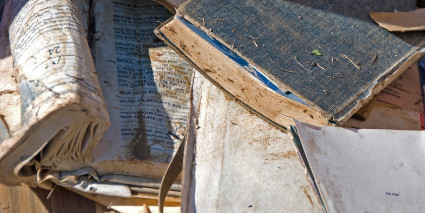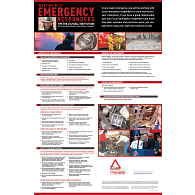No one wants to anticipate disasters, but proper preparation is a necessity for all institutions. The best approach is to be proactive and create a comprehensive disaster preparedness plan, complete with the supplies that might be necessary in the case of disaster. A step by step plan is crucial to protecting your collections. The process of creating a disaster preparedness plan will encourage valuable dialogue and should involve as many departments or individuals as possible. A diversity of viewpoints is important in order to think of and plan for a multitude of scenarios.

Elements of an Emergency Plan
Written copies of the emergency plan should be given to every individual involved or responsible for the plan. A copy should also be kept offsite as well. The plan should be in writing, everyone involved or responsible should be given a copy, and a copy should be kept offsite. The plan should list addresses and phone numbers of people, equipment and services and where to locate freezers, humidifiers, air conditioners, trucks and warehouses. Review and revise your plan often.
- Assess the risks – Think about what could go wrong. Are you in an area known for frequent flooding or tornados? Do you have old pipes near your storage areas?
- Reduce or remove risks - How can we prevent it? For example, there are many things that can be done to prevent a catastrophic fire
- Prioritize collection - Which items do we grab first?
- Establish disaster response team - Who are we going to call? Create a list of addresses and phone numbers of people, equipment and services. Also make note of where to locate freezers, humidifiers, air conditioners, trucks, and warehouses.
- Establish support networks - Who else can help?
- Prepare the disaster response plan - What do we do?
- Prepare the disaster recovery plan - How do we recover from the disaster?
- Train all staff - Do we all know what to do?
- Review & revise the plan. – Conduct a drill of your emergency plan. Revise as necessary.

Handling Water Damage
The most common type of damage in the case of disasters is from water, be it from flooding, building damage, or fire control. In the event of flood or water damage in your facility, the following is recommended for paper documents*:
Documents should be air-dried flat, as individual sheets or in small piles up to ¼”. Interleave documents prior to drying and replace interleaving materials when they become damp. Do not unfold or separate individual wet sheets.
If items are too numerous for air-drying:
- Interleave documents, by groups or individually, with freezer or waxed paper
- Pack sturdy containers 90% full with interleaved documents that are supported and standing up.
- Freeze.
If documents cannot be dried within 48 hours, freeze them until action can be taken. Freezing stabilized collections stops mold growth, ink running, dye transfer and swelling. A sub-zero commercial freezer is best, but a home freezer will work. A refrigerated truck will also keep materials cool enough to slow mold growth.
*Excerpt from Emergency Response and Salvage Wheel™, ©2005 Heritage Preservation, Inc.

 Planning for Disasters
Planning for Disasters


